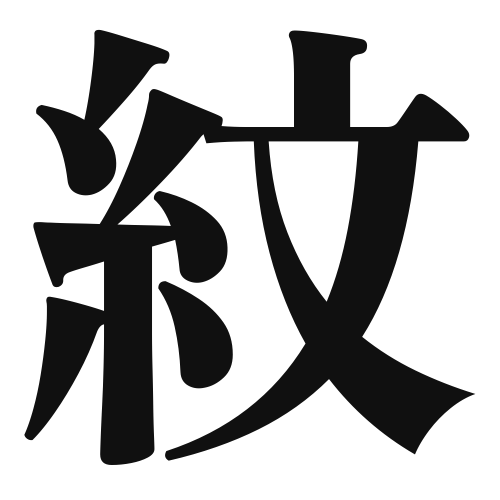1. Overview of Meaning
The kanji “紋” (mon) refers to a pattern, emblem, or design, often used in the context of family crests or decorative motifs. It signifies a distinctive mark or symbol that represents identity or heritage.
2. Formation and Radical
Formation of the Kanji: The kanji “紋” is a compound character (会意文字) that combines the radical for “silk” (糸) with the character “文” (which means “writing” or “pattern”). This combination suggests a woven or patterned design.
Radical: The radical of “紋” is 糸 (ito), which relates to threads or fibers, emphasizing its connection to textiles and patterns.
3. Examples of Usage
Common Words and Phrases: Some frequently used terms that include “紋” are:
- 家紋 (kamon) – family crest
- 文様 (monyou) – decorative pattern
Example Sentences in Daily Conversation:
- この着物には美しい家紋があります。
(This kimono has a beautiful family crest.) - 彼女は文様のデザインを考えています。
(She is thinking of a design for a decorative pattern.)
4. Synonyms and Antonyms
Similar Kanji: A similar kanji is “模” (mo), which means “pattern” or “model.” While both refer to designs, “模” often implies imitation or representation, whereas “紋” emphasizes uniqueness and identity.
Antonyms: An antonym could be “無” (mu), meaning “nothing” or “absence,” as it represents a lack of pattern or design.
5. Cultural and Historical Background
Connection to Japanese Culture: The concept of “紋” is deeply rooted in Japanese culture, particularly in the use of family crests (家紋) that signify lineage and heritage. These crests are often displayed on clothing, flags, and family documents.
Proverbs and Idioms: One common expression is “紋切り型” (monkiri-gata), which refers to something that is stereotypical or formulaic, indicating a lack of originality.
